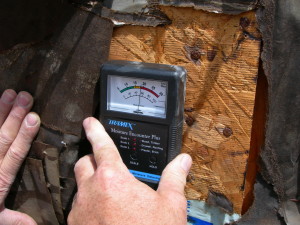At a recent industry event, someone asked me about the statute of limitation in Florida for a construction defect claim. My answer was “I’m not a lawyer but I’m pretty sure it’s four years.” The question prompted me to look it up and make sure I was right.
According to the International Risk Management Institute, Inc. (IRMI) a construction defect is defined as:
“A deficiency in the design or construction of a building or structure resulting from a failure to design or construct in a reasonably workmanlike manner, and/or in accordance with a buyer’s reasonable expectation.” The most dangerous defects have the capacity to fail, resulting in physical injury or damage to people or property.
Some examples of a potentially dangerous construction defect include things that can cause physical injury or damage to the property, things like:
- Structural issues related to hold downs (the brackets that tie the concrete to the framing)
- Improper design details of roof, curtain wall, or window assemblies
- Foundational cracks in concrete
- Moisture or water intrusion resulting in mold and mildew
According to IRMI, many defects aren’t dangerous but can cause harm in the form of deprecation in the value of the property and extra expenses. For example:
- Sloping floor substrates
- Cracks in walls or even mechanical or plumbing systems caused by overloading the structure
Turns out, it is four years. The statute of limitations for construction defect disputes in Florida is defined in Florida Statute §95.11(3)(c). Under the law an owner has four years to initiate a lawsuit, with the clock starting on the latest of the following four dates:
- The date the owner took possession of the property
- The date the certificate of occupancy was issued by the building department
- If the project was not completed, the date the project was abandoned by the contractor, or
- The date the contractor’s contract was terminated by the owner.
However, if the construction defect is latent (not readily visible or obvious), the statute of limitations commences on the date the latent defect was discovered. But, according to the statute, under no circumstances can an owner initiate a lawsuit more than ten years after the dates/factors identified above. This 10-year cap is referred to as the Statute of Repose.
If you are considering filing a construct defect claim or if you are a contractor, subcontractor or supplier facing a defect claim, give us a call. Carolina Consultants’ thorough and expert knowledge of handling a construction defect claim in Florida can help you along the way.


